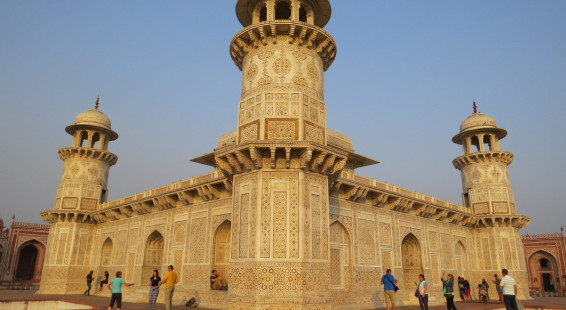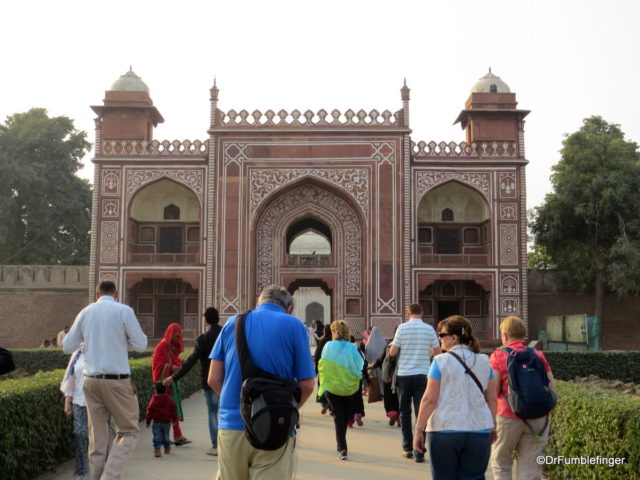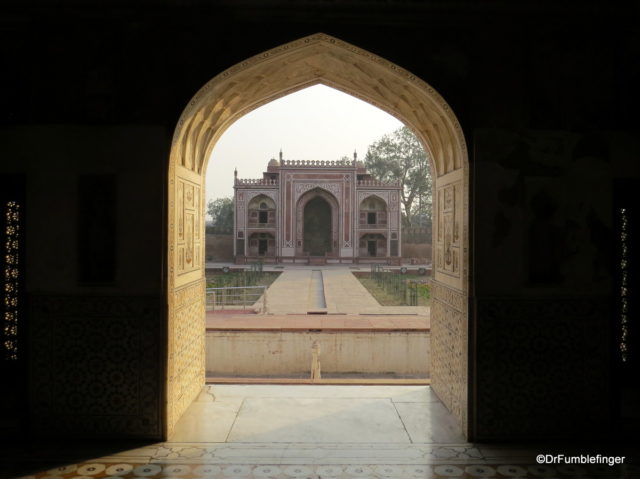
The Tomb of Itimad-ud-Daulah (hereafter called TID), also know as the “Baby Taj”, is overshadowed in popularity by some of Agra’s other tourist attractions, namely the incomparable Taj Mahal (25 mins away) and Red Fort (14 minutes away). Yet TID is a beautiful marble structure that’s worth a visit, especially at dusk or dawn as the soft light highlights its beautiful architectural details.
TID is on the eastern banks of River Yamuna and was built by Nur Jahan, wife of the Mughal Emperor Jahangir and step-mother of Sha Jahan (who was to become the builder of the Taj Mahal). Nur Jahan built the tomb for her father, Mirzā Ghiyās Beg, a Persian amir in exile who had been given the title of I’timād-ud-Daulah (pillar of the state). The tomb was built between 1622 and 1628, with the intent that it was to be a “jewel box” in a beautiful garden. A Persian influence is definitely evident in the symmetric gardens surrounding the tomb.

Entrance to the Tomb of Itimad Ud Paulah
The mausoleum itself covers about twenty-three square meters, is built on a base of about fifty square meters, and is elevated one meter. On each corner are hexagonal 13 m tall towers capped with small domes known as Chattris.

View from the Tomb of Itimad Ud Paulah
The inner space of the tomb is divided into nine chambers. The central chamber is the largest of all and holds the sarcophagi of Itimad-Ud-Daulah and his wife. Especially striking are the beautiful inlaid stone work of the pietra dura (floral design made up of semiprecious stone) technique. There is no glazed tiling in TID, and the decoration is largely by coloured stones.
Perhaps the monument’s greatest importance is that it served as an inspiration for the building of the Taj Mahal. The tomb of IUD was the first to use white marble. The tomb’s delicate motifs on the marble surfaces and its symmetry, are evident influences in the Taj Mahal.
(Click on thumbnails to enlarge, right arrow to advance the slideshow)